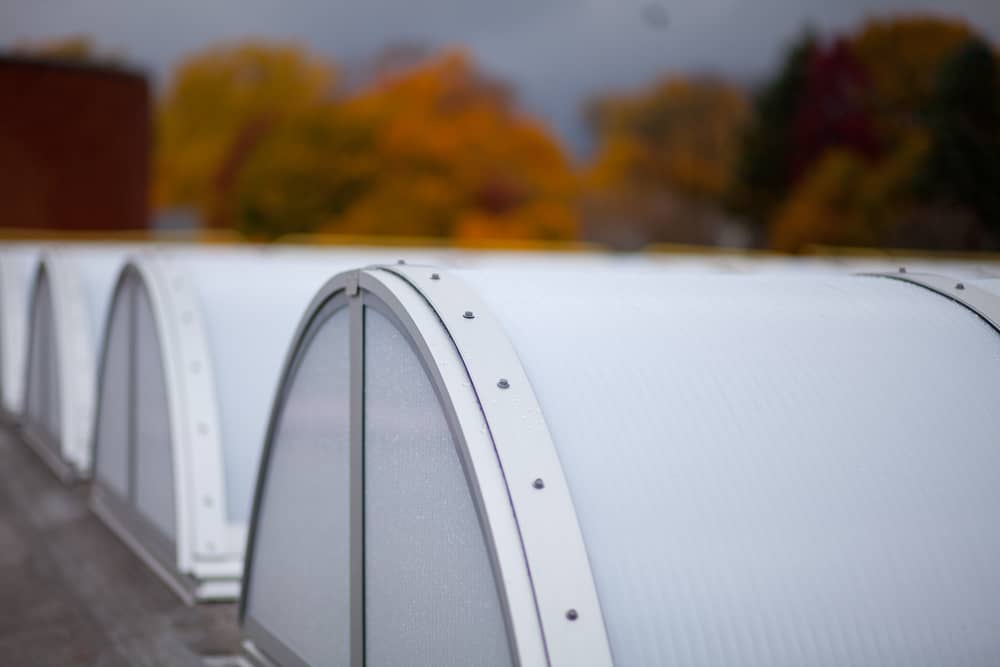We recently had an architect come to us with a bright and bold design for a sports arena. The new facility was to be a 40,000-square-foot indoor sports and cultural performance space that offered a state-of-the-art training center, locker rooms that were tripled in size, and daylighting components that maximized the facility’s natural light with views of the surrounding campus. Daylighting was central to the design’s aesthetic, and the renders visualized the venue suffused in golden light.
However, when we placed the design in our daylighting analysis tools, natural light did not perform as intended – large portions of the venue were shadowed, the overhead skylights caused significant glare, and the lux level was not ideal for a sports stadium. Though this was unexpected, we used our daylighting software to make some relatively easy modifications – we played with the placement and size of the skylights to remove those shadowy pockets, and replaced the glazing with opal polycarbonate, which removed the glare and delivered the optimal foot candle strength for sports activity. By visualizing the changes in a virtual setting, the architect was able to make choices that matched closely with his original aesthetic and didn’t exceed the construction budget.
Daylighting is extremely powerful, and its benefits are unsurpassed on so many fronts. But there are pitfalls a designer must avoid, such as code limitations, excessive glare, solar heat gain, overtaxing the cooling system, and the cannibalization of interior lighting. When designing with daylighting systems, here are 3 rules to follow to ensure your design achieves true energy savings, occupant comfort, and the desired aesthetic:

1. Partner with a daylighting designer ASAP
Luckily with the example above, the designer did not have to make vast alterations to his design. However, it will behoove you to collaborate as early as possible with a daylighting provider who is experienced in daylighting design. As mentioned above, there are factors to daylighting that, when not mitigated, can hinder your project. Partnering ASAP will help you avoid getting locked into ideas that don’t deliver on your daylighting performance goals, and help you explore new ideas you possibly didn’t realize were an option. With this particular case, the architect was able to see the possibilities of polycarbonate instead of glass in his design – not only did the lightweight polycarbonate improve the daylighting, but it also reduced the necessary structural elements and provided cost-savings.
2. Know your Daylight-Responsive Electric Lighting Control Requirements
International Energy Conservation codes have become more stringent in recent years. For many applications, it is now a requirement that daylight-responsive lighting controls be incorporated into spaces that utilize daylighting. The purpose of this is to spare the space from lighting cannibalization and prevent it from overheating. Code requirements can impact the ways in which you incorporate daylighting into your design since you must calibrate it with the daylight-responsive electric lighting controls - be aware of these before you commit to an aesthetic.

3. Work with Flexible Daylighting Systems
To allow easy changes to your design plans that maximize the daylighting benefits, design with daylighting systems the offer flexibility in size, shape, and glazing type. In the example given earlier, the reason the architect was able to optimize the daylighting was because EXTECH’s systems were used for the skylights and translucent walls. Our systems can be customized to adapt to a variety of sizes and shapes. Additionally, one of the surest ways to easily optimize daylighting is by manipulating the glazing with different materials, translucencies, and colors. EXTECH’s systems can accommodate both glass and polycarbonate, and polycarbonate is available in a wide variety of color and diffusive options. If you design with systems that only accept one glazing type or cannot adapt to different sizes and shapes, you put yourself at a disadvantage.
Though these are general rules to follow, there are other factors to consider in order to maximize the benefits of daylighting. If you have more questions, please contact us – we’re ready to chat!




